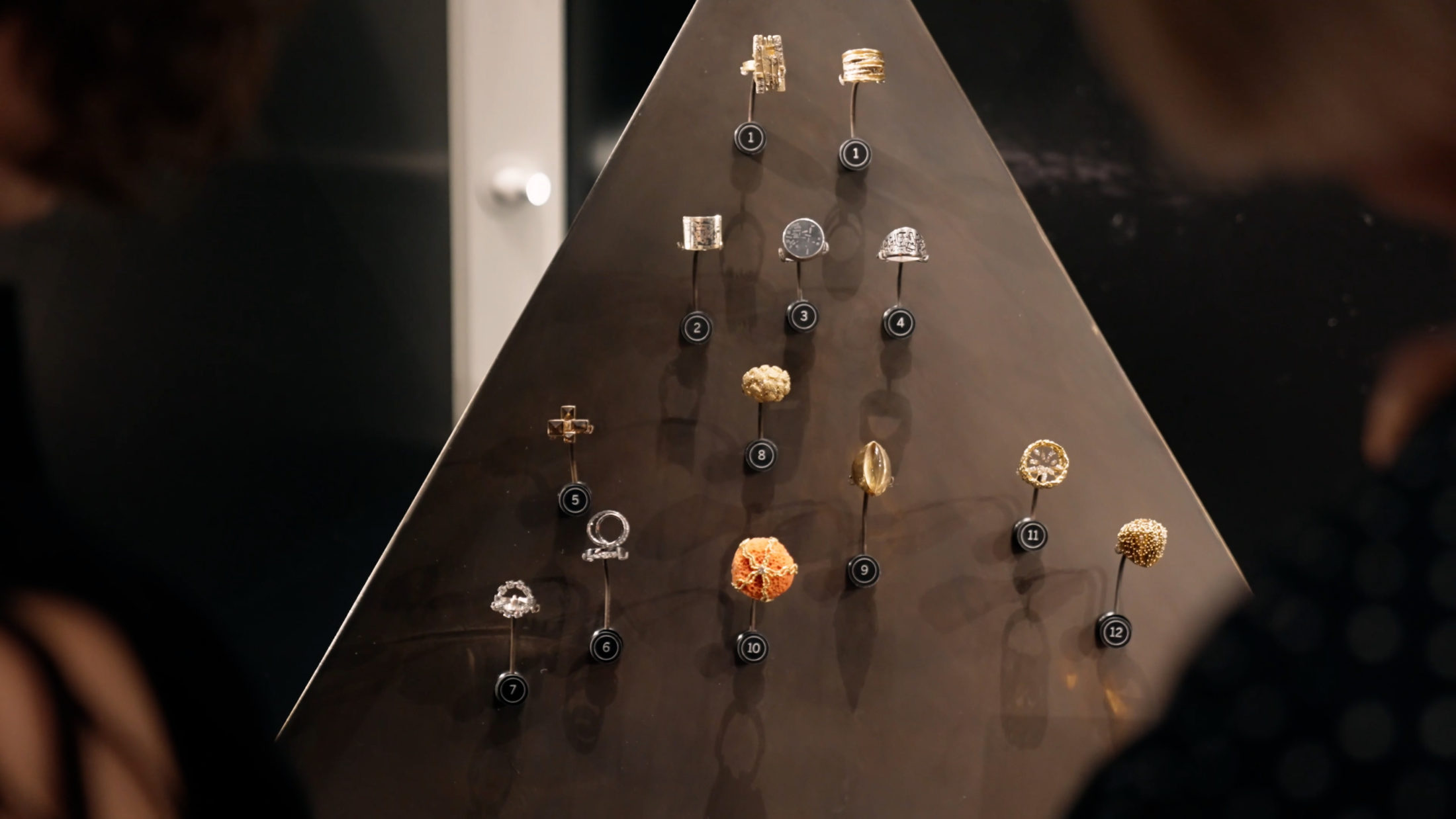Curating modern and contemporary rings with Beatriz Chadour-Sampson

“Despite its rigidly defined form, the finger ring has been subject to an incredible wealth of interpretations…”
— Louis Koch (1862-1930), renowned Court jeweller and collector of rings from Frankfurt am Main.
From 1900 onwards the ring experienced a radical change, moving away from its conventional circular form surrounding the finger and attached bezel. René Lalique was hailed by the critics as the ‘emancipator and moderniser of French jewellery’ at the pivotal Paris Exposition Universelle in 1900. He transformed the ring into a miniature sculpture for the hand and pioneered the combination of non-precious materials, like horn and glass, with precious metals. Like Lalique, in the 1950s and onwards, the choice of inexpensive gemstones in unusual cuts combined with precious metals proved that the value of the jewels lay in their creative and imaginative design, rather than their monetary value. Roger Morris from Britain and Fritz Maierhofer from Austria dared to combine acrylic with gold and silver.
This virtual talk discusses the rings from the Goldsmiths’ Company Collection, founded by its art director Graham Hughes in the aftermath of the landmark 1961 International Exhibition of Modern Jewellery 1890-1961’ at Goldsmiths’ Hall. Hughes recognised young talents who were at the beginning of their careers and went on to become pioneering makers of international renown. He exhibited their work alongside that of established artist jewellers. In hindsight it was a stepping stone for these budding jewellers, which included Björn Weckström from Finland, Sigurd Persson from Sweden, Friedrich Becker from Germany and Bruno Martinazzi from Italy.
The rings in the Goldsmiths’ Company are often rare examples of their early work. These are compared with other major collections both public and private which specialised in rings, such as the Victoria and Albert Museum, London and the Alice and Louis Koch Collection in the Swiss Nationalmuseum, Zurich with over 600 rings from the 20th and 21st century. The rings in these collections document both the styles of the period represented in the Goldsmiths’ Company Collection, and the later styles the jewellers went on to develop.
The Hashimoto Collection of rings in the National Museum of Western Art in Tokyo is more recent, and has a selection of comparable rings of avant-garde jewellers from London who experimented with new concepts, such as Andrew Grima, John Donald, David Thomas and Ernest Blyth. They transformed gold into textured surfaces with unexpected visual effects and had a preference for rough and un-cut gemstones, or random gemstone formations. These were positioned in unconventional settings created by novel surface treatments of the metals, as seen in the fused sculptural rings by Gerda Flöckinger. Wendy Ramshaw created her signature ring sets as sculptures and when removed from their stands the rings are distributed on the hand by the wearer. Rings made in recent decades by contemporary makers, such as Frances Bendixson, Elizabeth Gage, Susan May, Dorothy Hogg, Sarah Stafford and Emefa Cole have developed into autobiographical expressions of the jeweller, a reflection of a society and art movements, like never before.
Dr Beatriz Chadour-Sampson is an international jewellery historian, author and lecturer, as well as being an Associate Member of the Goldsmiths’ Company. She was the curator of the Alice and Louis Koch Collection of finger rings, which is now in the Swiss National Museum, Zurich and consultant curator to the William and Judith Bollinger Jewellery Gallery at the Victoria & Albert Museum, London.
